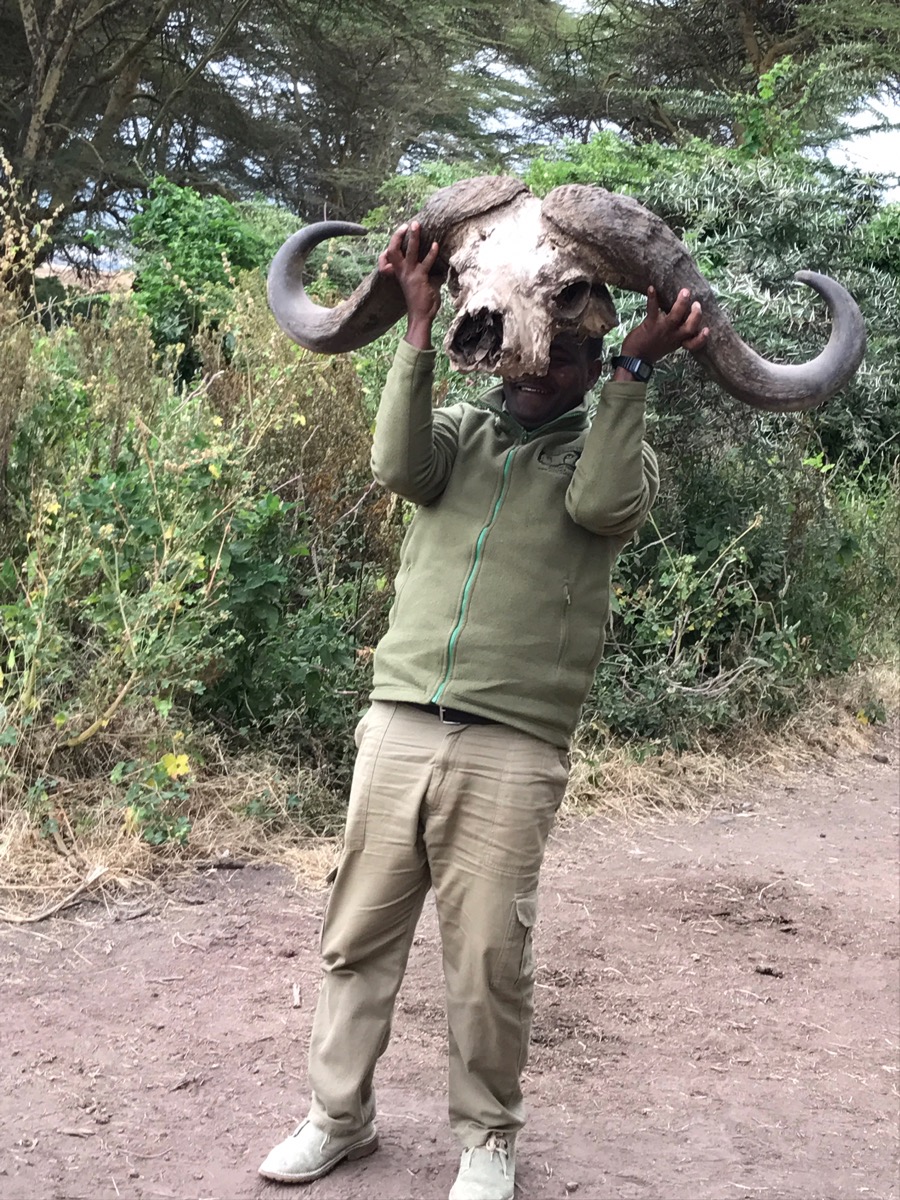Did I mention that Farmhouse is lovely? Perhaps I did.
The breakfasts are also excellent, served in the bright, airy dining room overlooking the lawn and garden. It was pretty chilly and overcast. We are near the rim of the crater which itself is above a high plateau.
We set off at 7am and it was really cold in the wagon. I had forgotten to take my Masai blanket so used a vest to keep my legs warm and had on my neck scarf, beanie and gloves. The scarf also doubled as my dust mask when we descended into the crater. 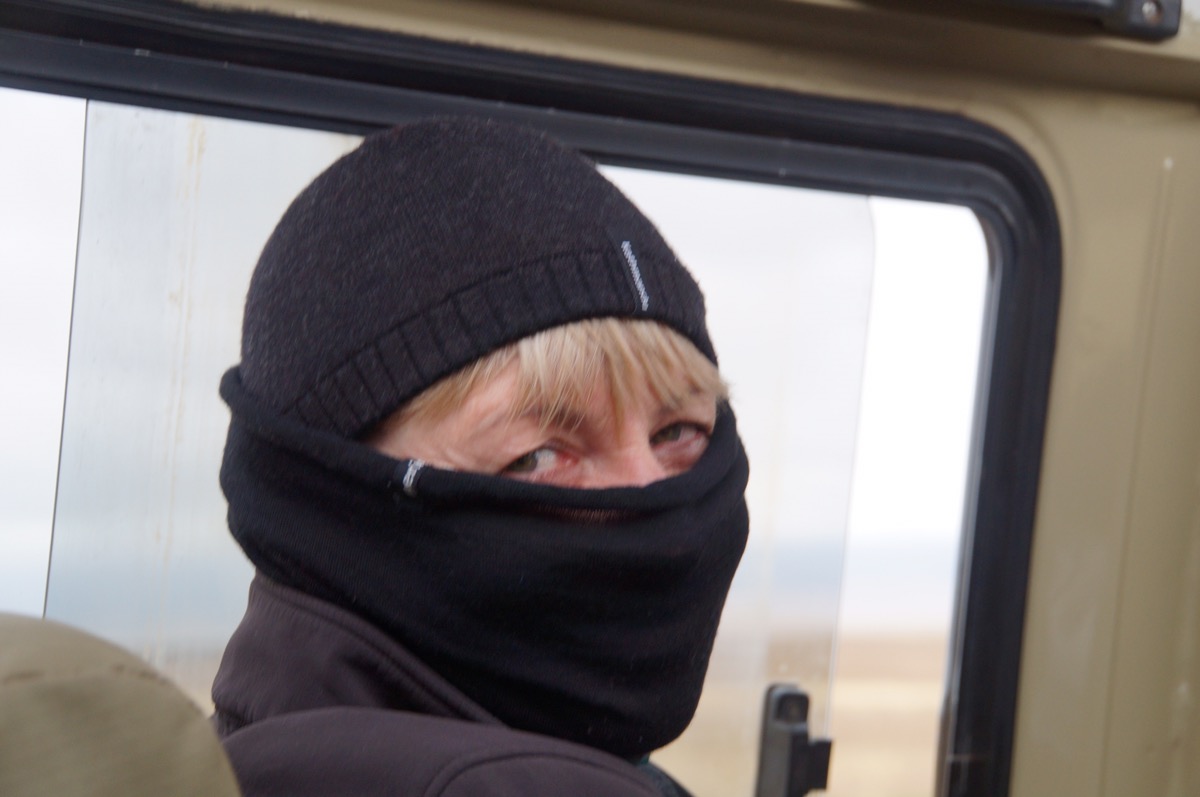
It is all very green around the crater, which seems to be in cloud for much of each day. The vegetation is far more like jungle than anything we had seen so far.
The geography of the crater is spectacular. It’s a huge, flat, circular area with small bodies of water scattered over it. We stopped at the information centre at the main gate and Erellah talked about the crater with reference to a model they have there. The crater itself is only a few kilometres away from the Olduvai Gorge where they found the remains of ‘Lucy’ the earliest human remains. We passed the turn off on our way from Serengeti. The crater is 8,300 km2 and large enough to form its own ecosystem for the animals. They don’t migrate outside the crater but do a mini migration within. There are no crocodiles or giraffes but they have most of the others that we saw in Serengeti.
As we descended down into the crater we passed through a large area of very high grass. I was just thinking we wouldn’t see much there when we pulled up beside a lion sound asleep not 10m away.

We saw an amazing variety of bird life. All manner of storks and waterfowl.
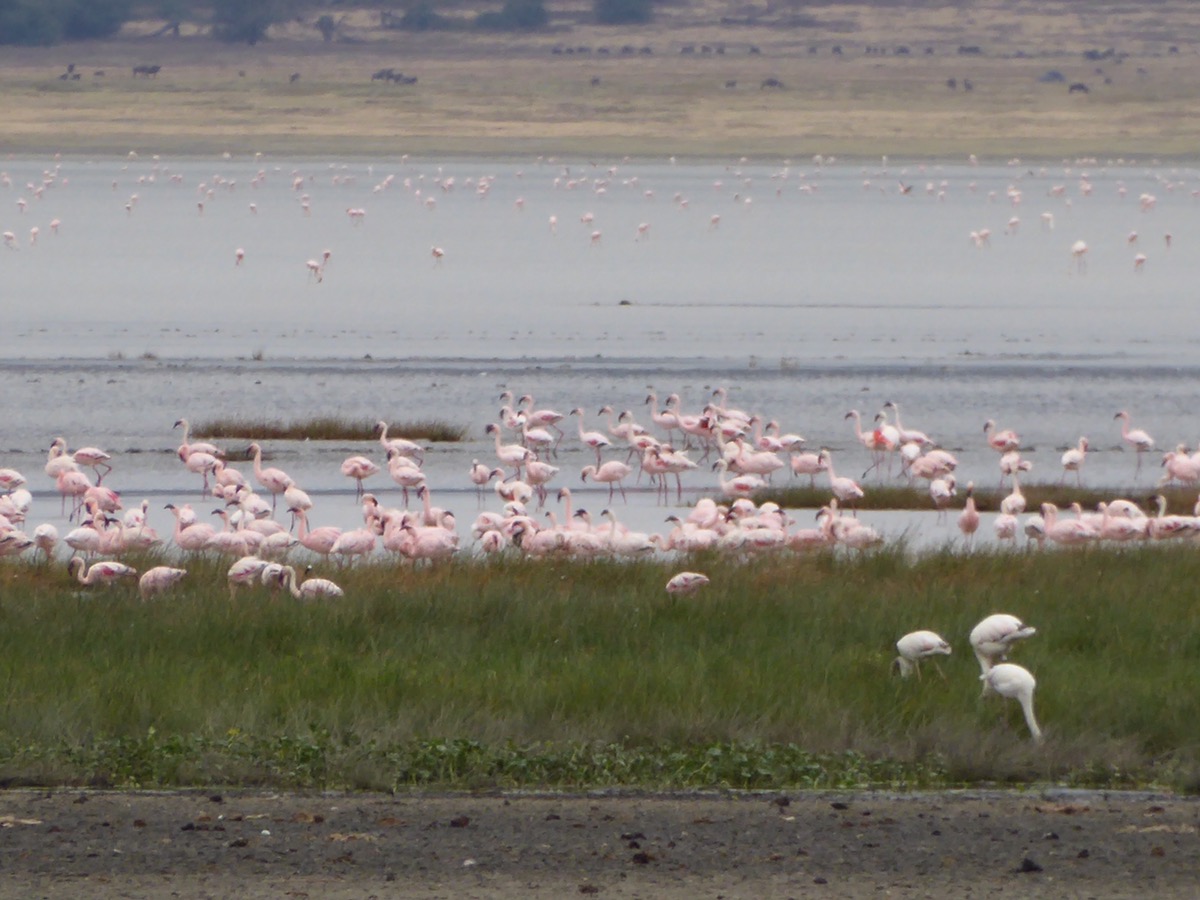
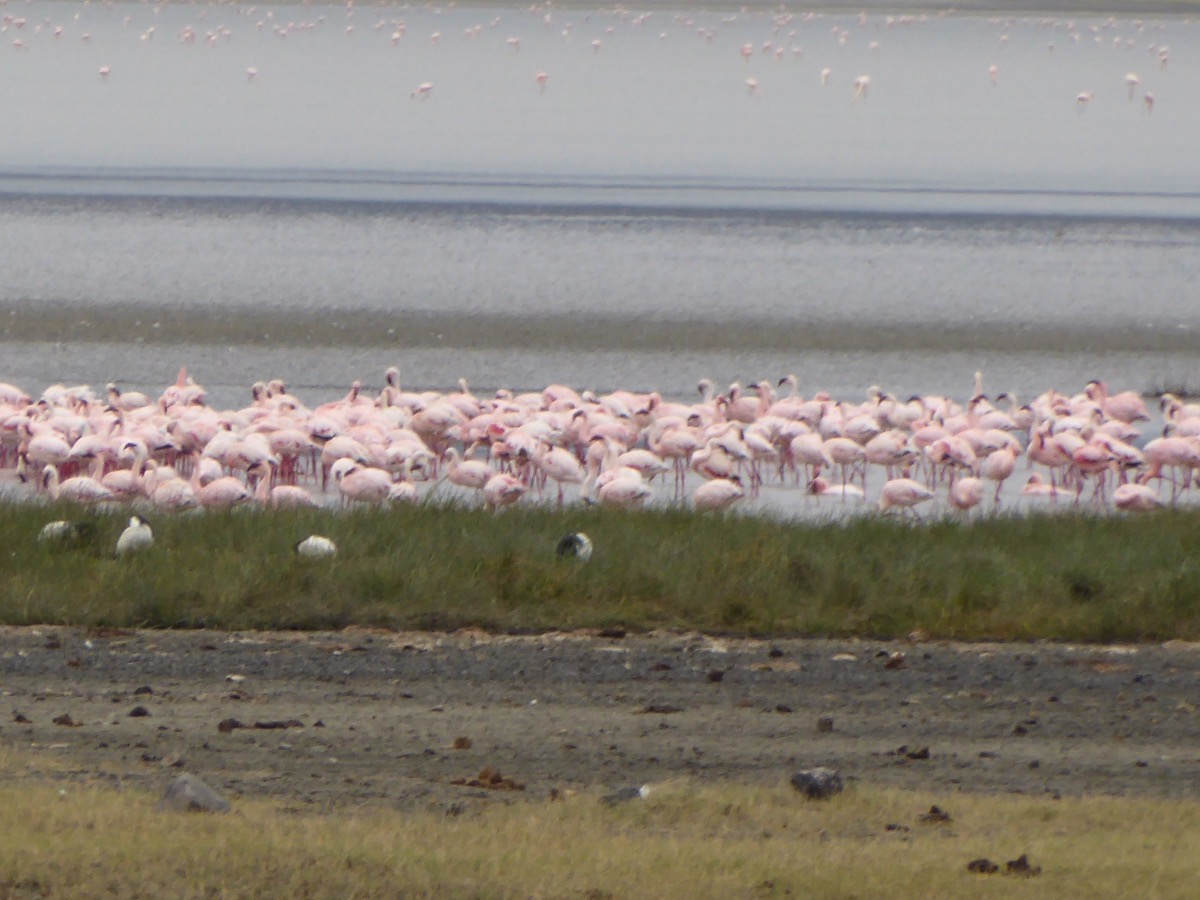 We also saw more hippos and lots of zebras. Also lots of different types of monkeys.
We also saw more hippos and lots of zebras. Also lots of different types of monkeys.
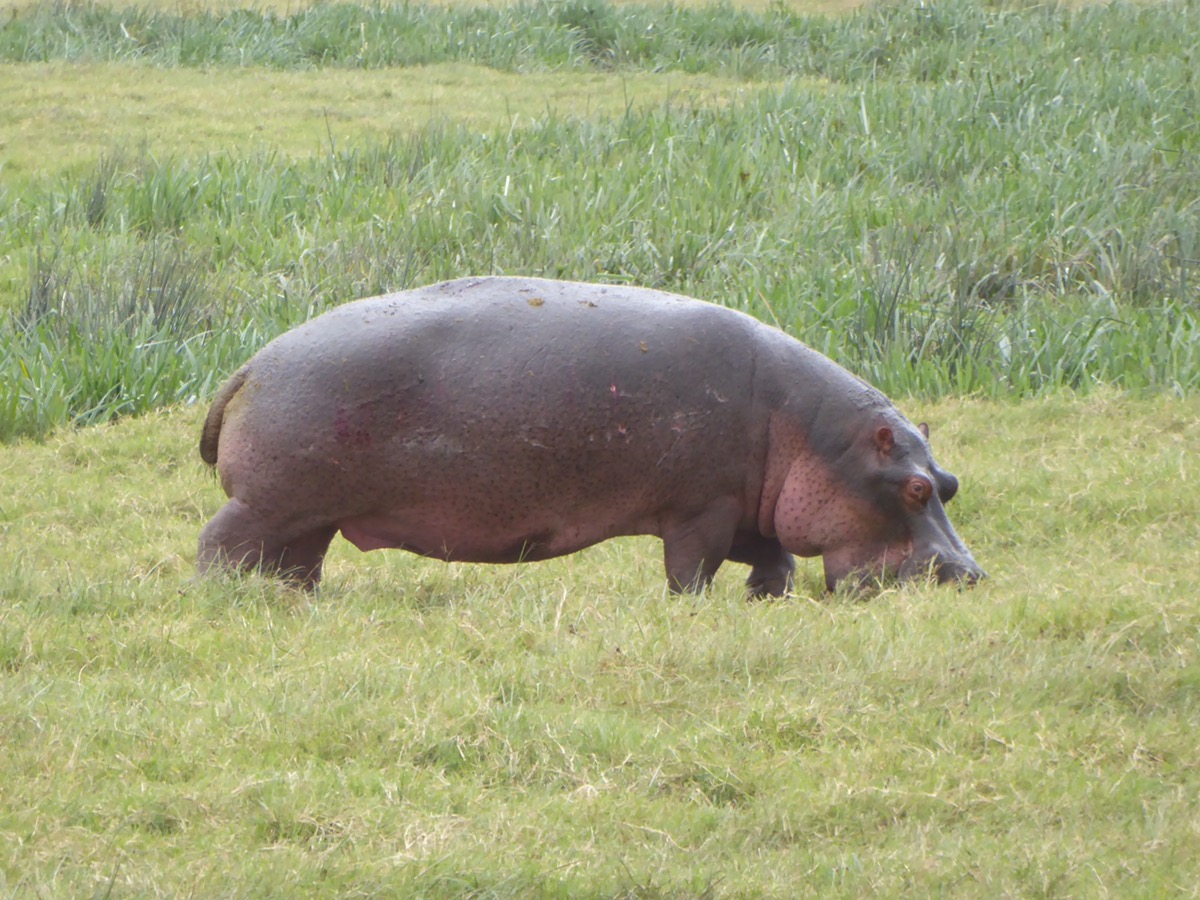

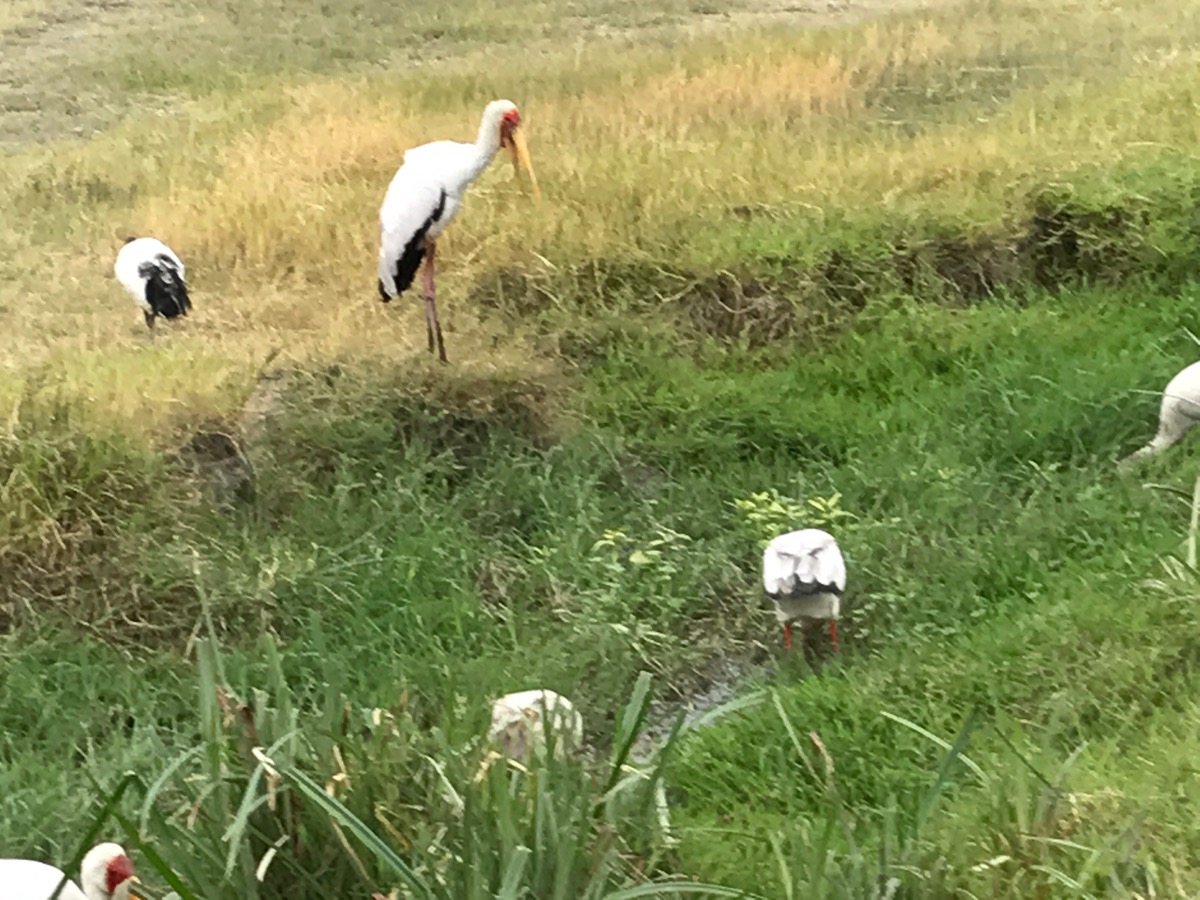
Over at the side amongst the trees we saw some elephants and a beautiful waterbuck, but it moved before we could get the window open to photograph it. It was pretty cold for most of the morning so we had the roof down.
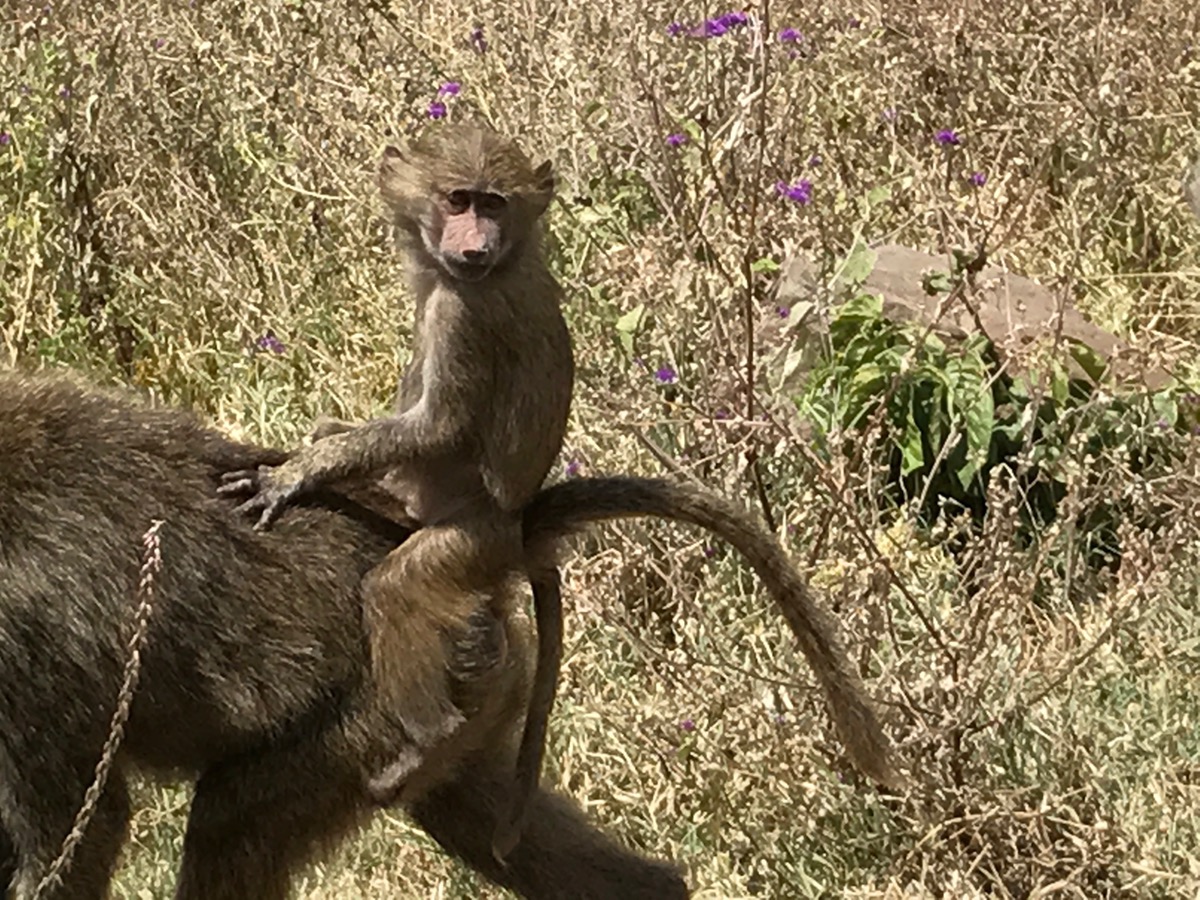
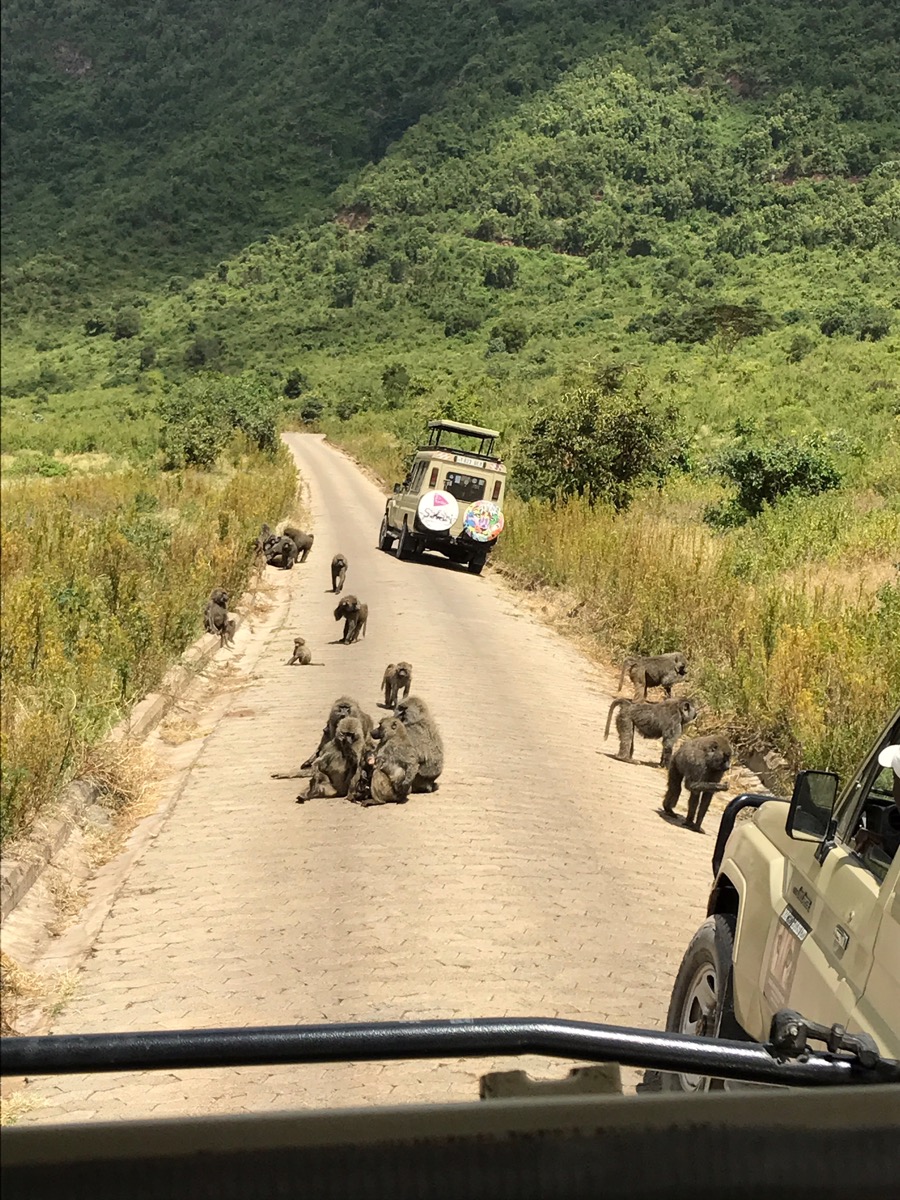
At this stage I must correct my description of the vehicles we travelled in. Mike has been quite critical of my loose reference to land rovers. They are predominantly NOT Land Rovers (can’t you just hear him!) The vast majority of safari vehicles are Toyota Landcruisers which have been modified for African conditions with additional suspension and roofs that can be raised. There is evidently some symbiotic relationship between Toyota and the government meaning that there is a preference for Toyotas. They are practically all beige coloured so it paid to take note of your licence plate. 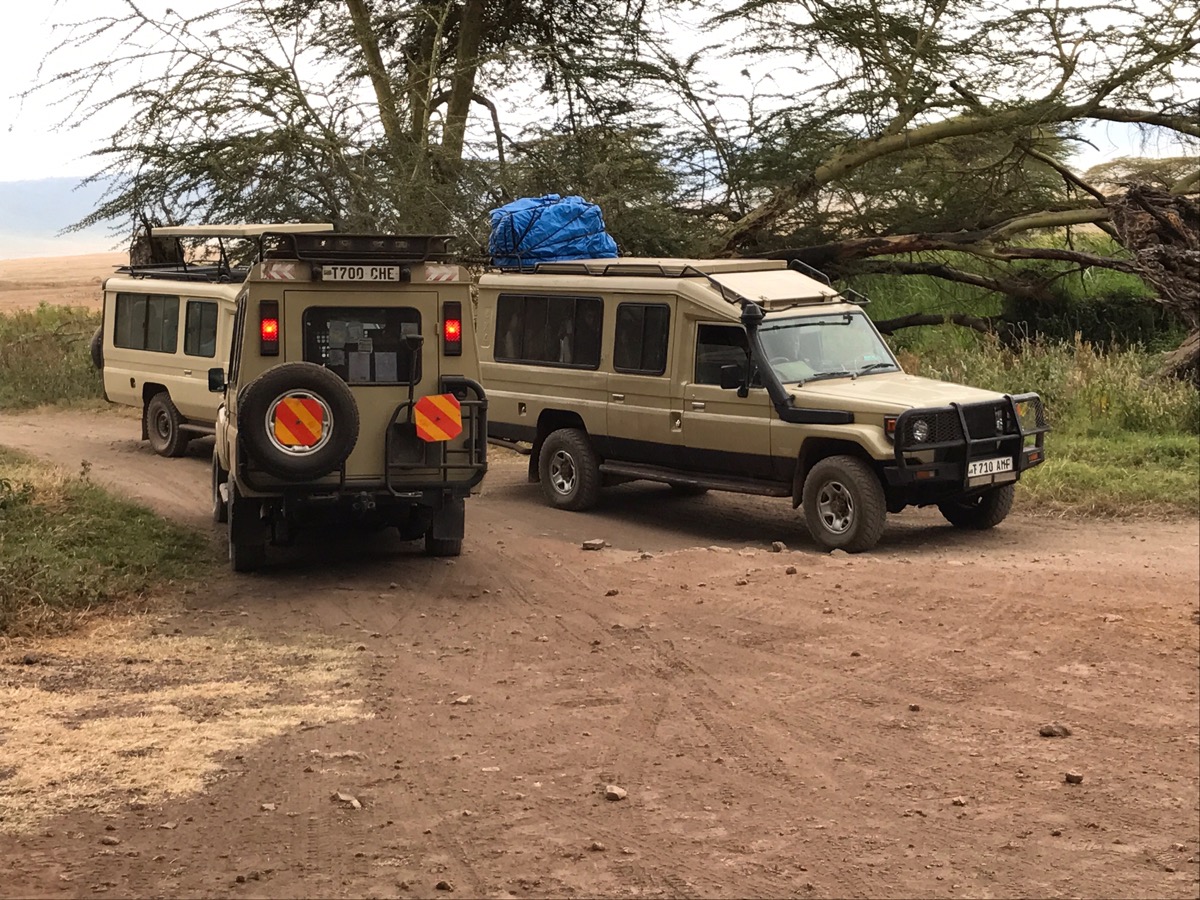
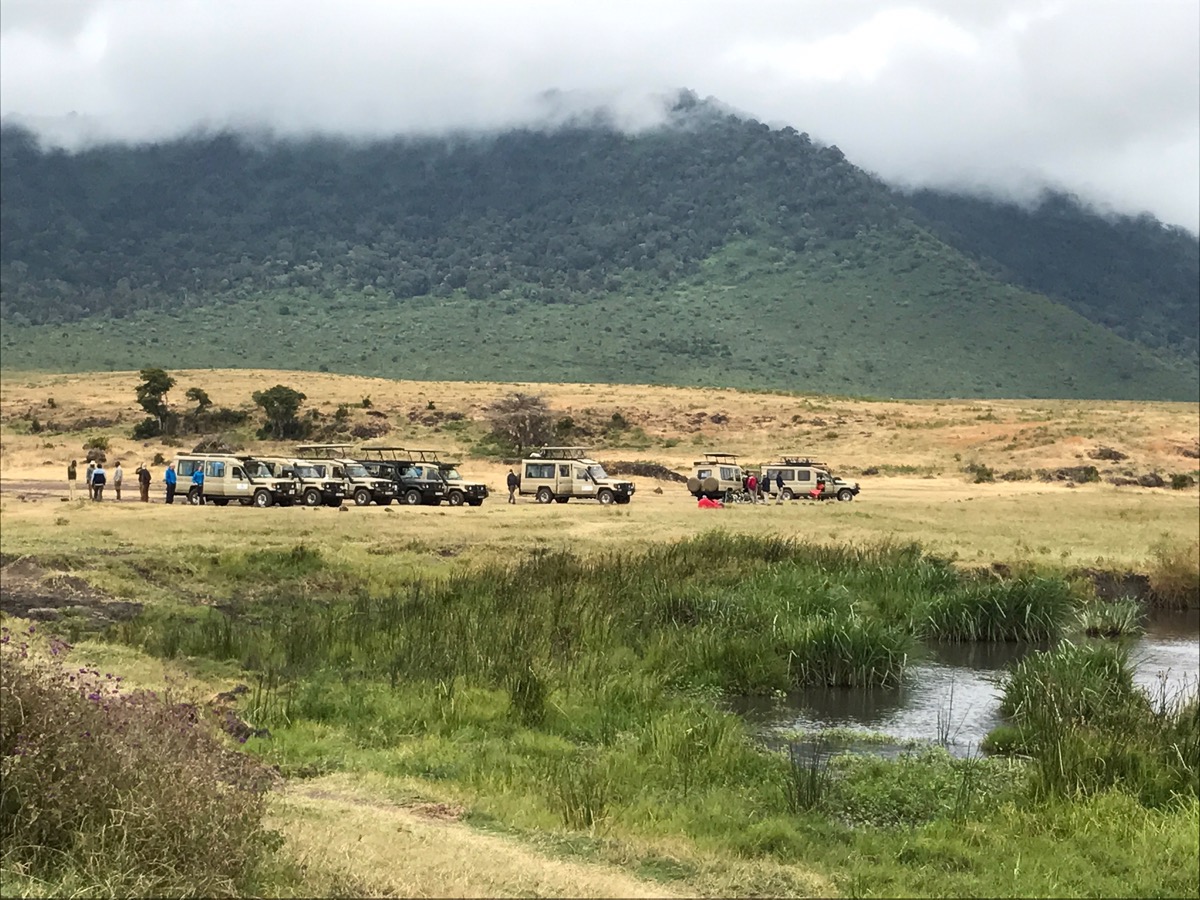
There are clean toilets available at various places and they are marked by buffalo horns outside. They are really heavy.
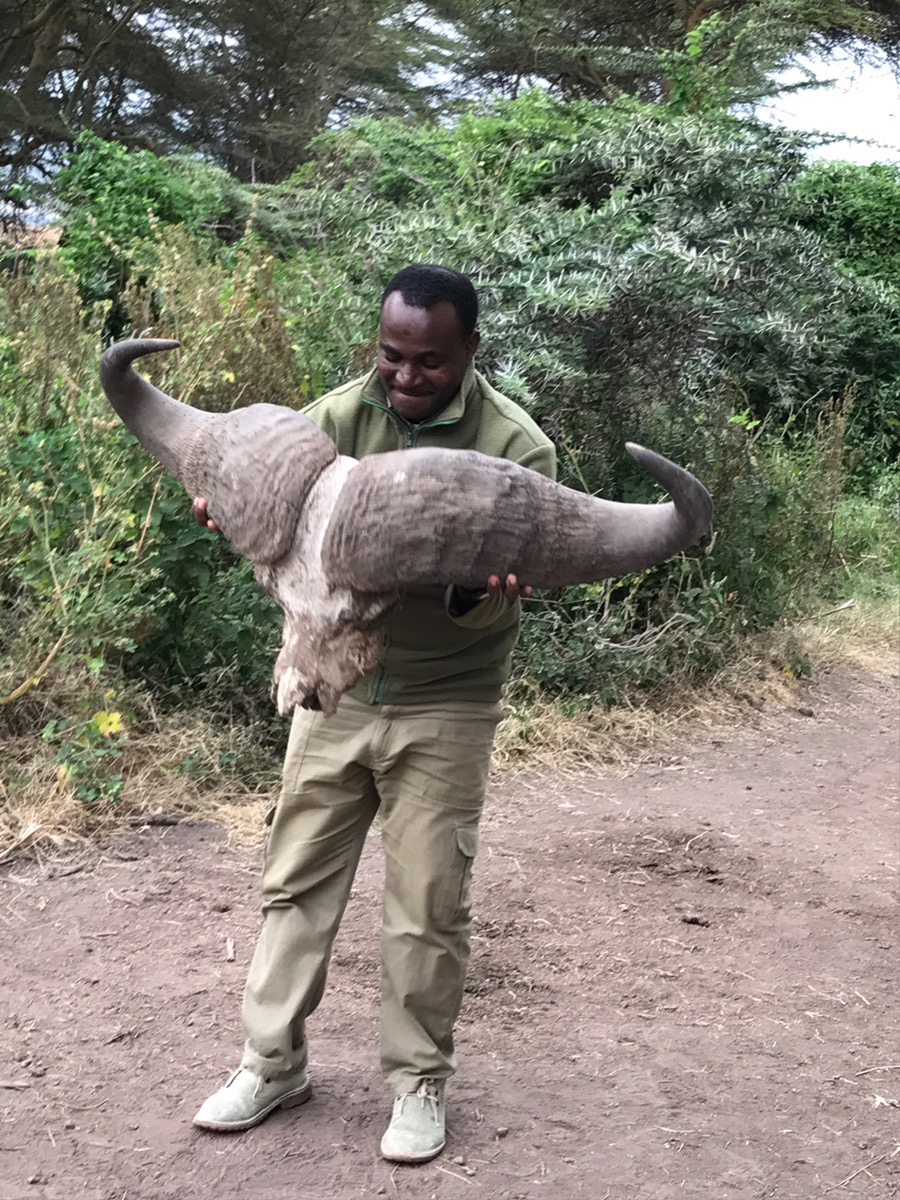
We had lunch beside a lake. We had packed a picnic lunch before we set out and there were beers in the fridge inside the Toyota (Mike will be happy now I’ve called it a Toyota).
The lake was teeming with hippos which were mainly submerged and one was very close to where he was standing and it was moving towards him. He thinks I fuss too much!
Our driver, Rama, reckoned he saw a black rhino through the binoculars. I saw plenty also but he reckoned mine were all wildebeest.


We got back at about 3pm and had a rest afternoon followed by another lovely dinner.
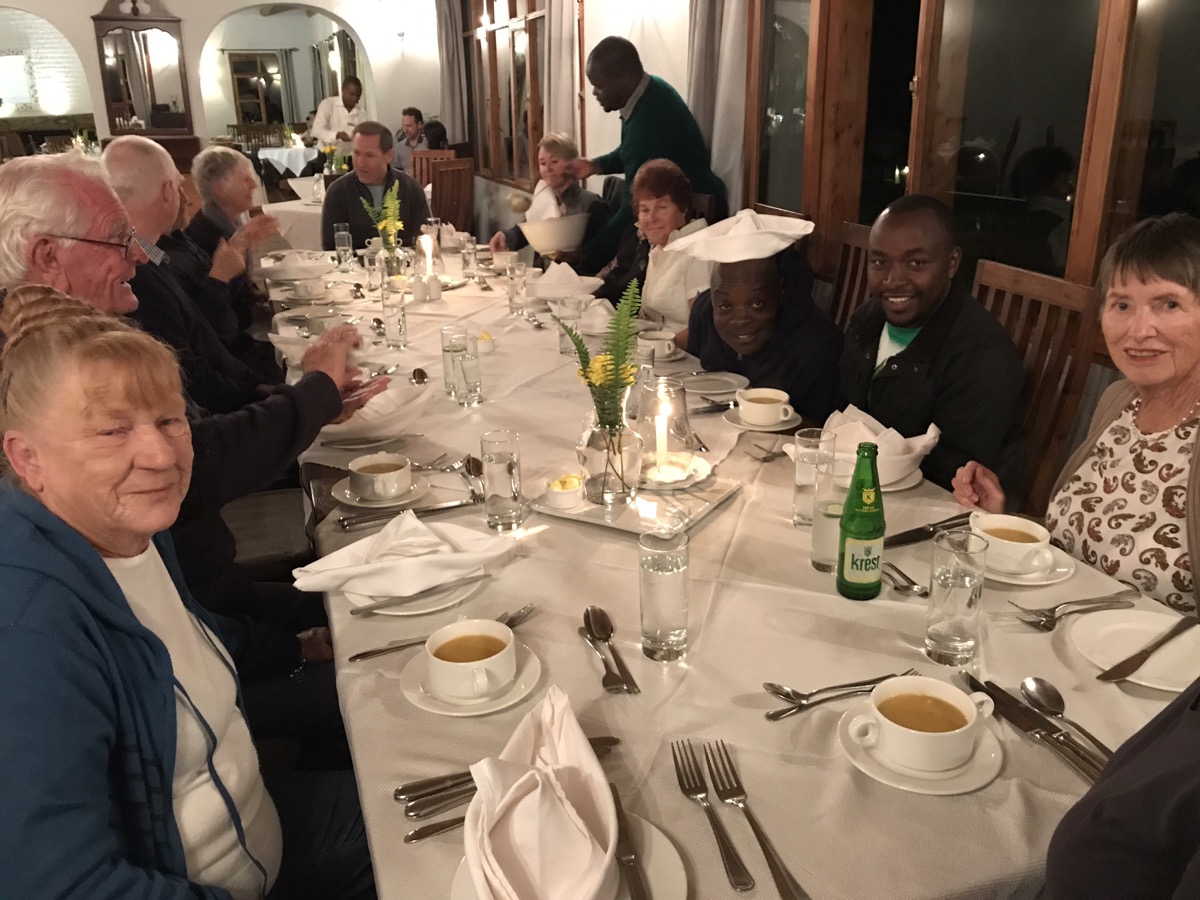
It was our last night together as a group. We will miss Lesley, Rick, Pat and Yvonne, who were all excellent company. We will also miss Erellah, Martin, and Rama. I feel sorry for them as they copped so much moaning and complaining from the group in the other vehicle. Erellah and Martin swapped each day and I know it was just to retain some sanity. It’s hard to fathom how two different groups of people from NZ and Australia and all over 50 years old could be so different in outlook and expectations. We counted ourselves lucky in our group.

